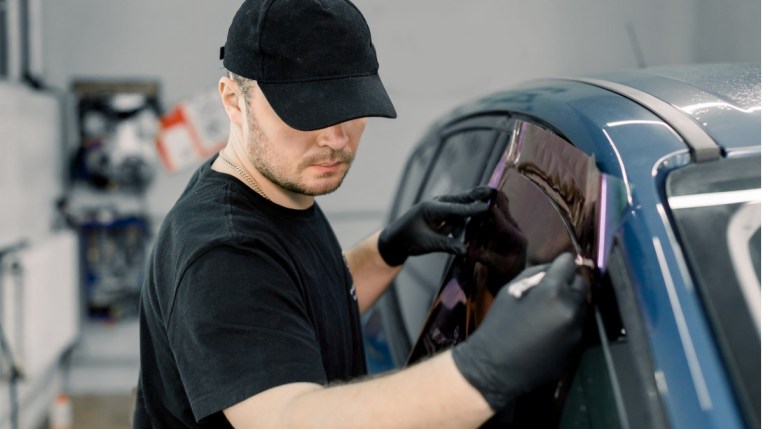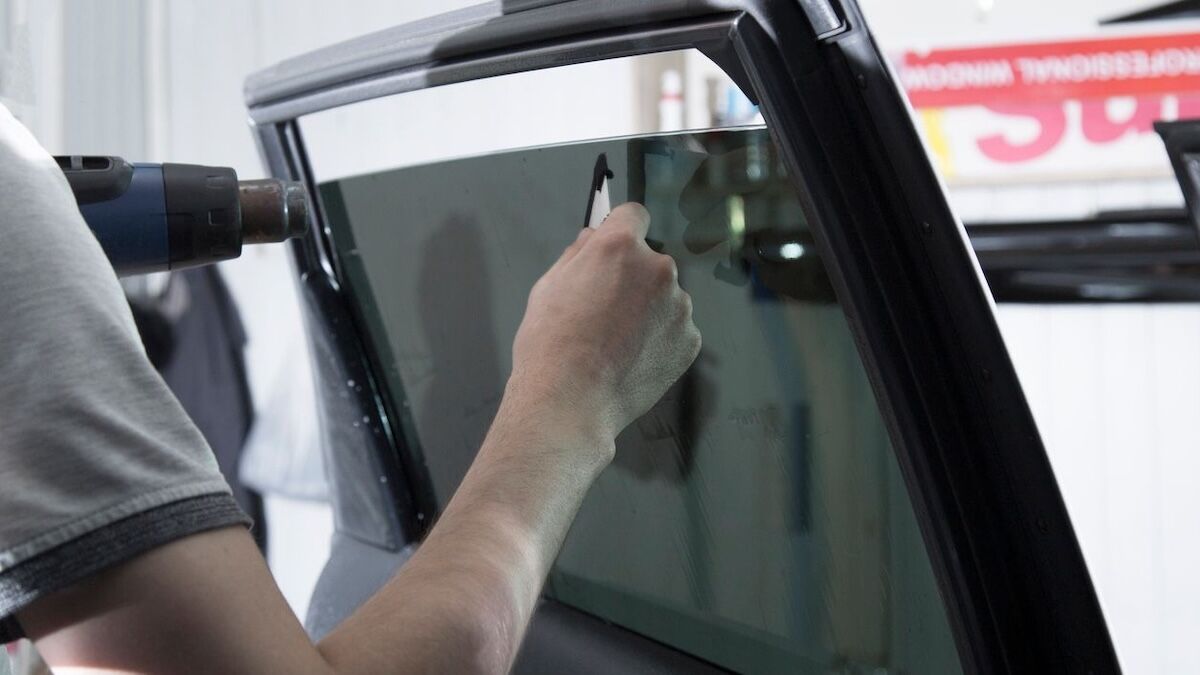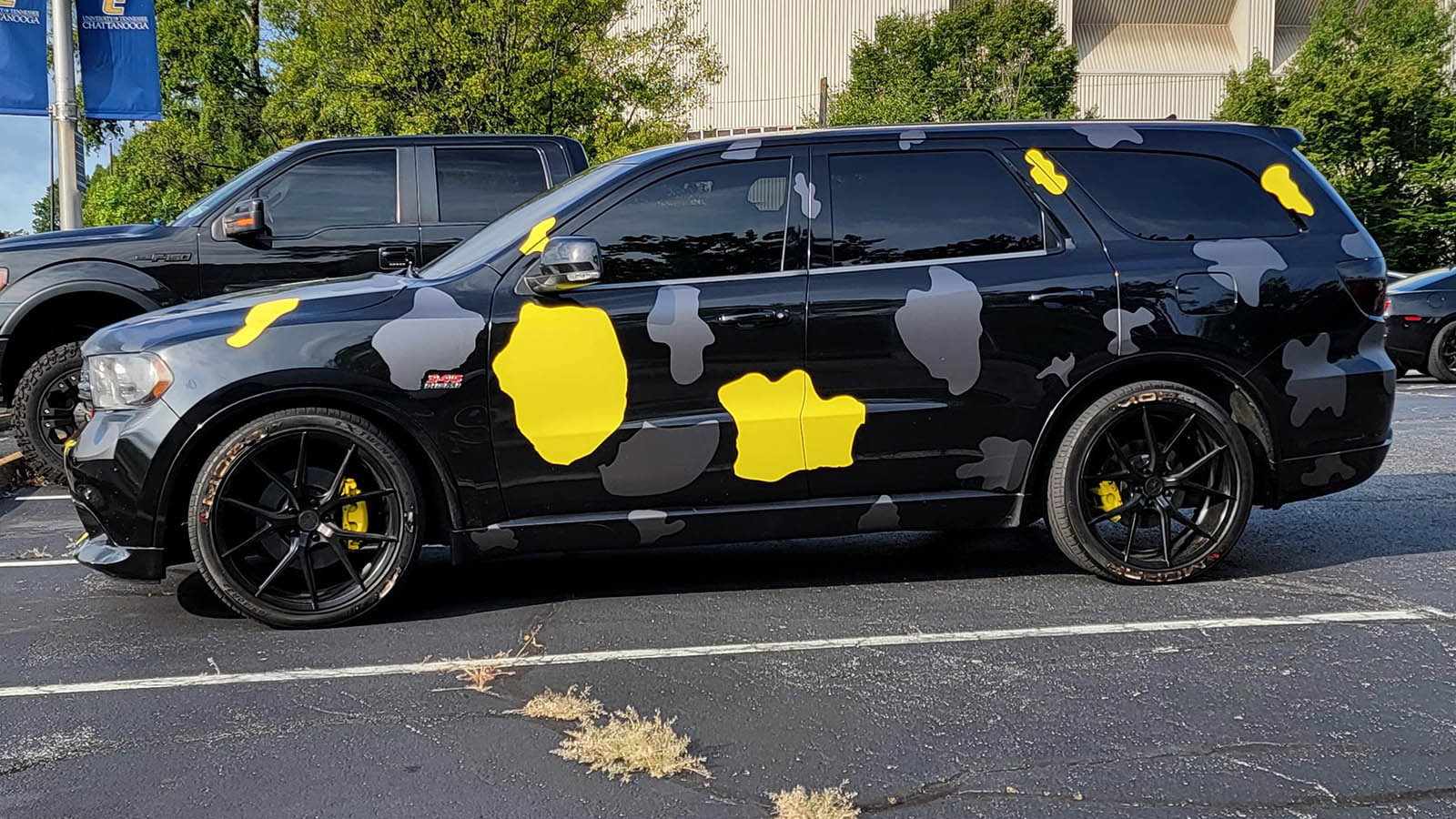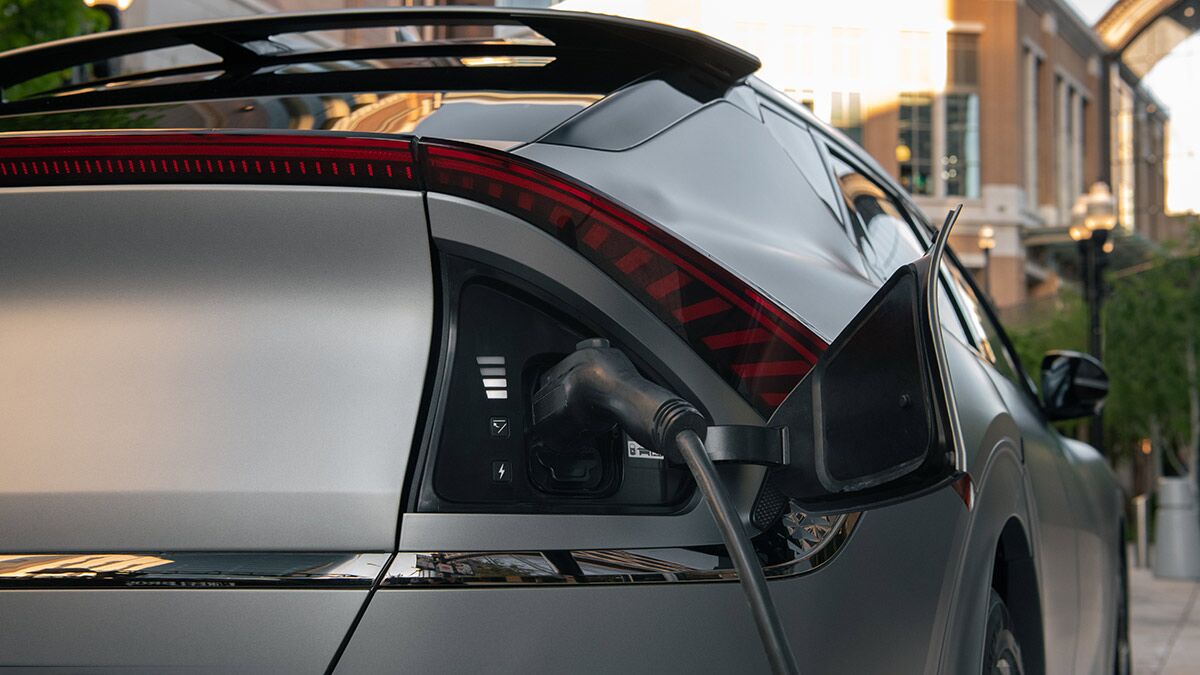Window Tint Quick Tips
- Check legality in your state, then consider your budget, desired heat rejection, expected appearance, and signal-friendliness to choose window tint for your vehicle.
- Car window tinting offers benefits such as reduced glare, lower cabin temperatures, UV protection, and enhanced privacy, but legal tint levels vary by state.
- Types of window tint — ceramic, carbon, metallic, hybrid, and dyed — have unique advantages, disadvantages, and price points. Do-it-yourself kits are available, but the pros at shops have skills that come with experience.
Car window tinting can give your ride a stylish look and improve visibility by reducing glare. Fans of tinted windows say the darkened glass slows the fading of interior surfaces due to sunlight exposure. They also say tinting helps keep the temperature inside a car lower.
Tinted car windows also increase privacy and security because they make it more difficult to see inside the automobile. In some cases, medical conditions may require a car owner to have tinted windows.
Before you choose to darken your vehicle’s glass, consider these tips about car tinting, the types available, and the pros and cons of each. And before buying, learn about the state laws around window tinting so you can make an informed decision.
- What Is Window Tint?
- States Determine Tinting Laws
- Window Tint Law Exemptions
- Window Tinting Penalties
- Car Tinting Installation Options and Cost
- Different Kinds of Tint
- Removing Window Tint Film
1. What Is Window Tint?
Most newer cars offer safety glass with a coating or other treatment to provide some window tinting to keep out harmful ultraviolet rays. Aftermarket window tinting is a method of applying a thin film to the interior surface of a vehicle’s windows. This material darkens a car’s windows to block UV light and reduce glare from the sun and headlights.
Car window tint film is available in a variety of materials and shades. A standard performance measurement used for car window tinting is visible light transmission. A darker shade of car tinting has a lower percentage of light transmission. The tint affects how much light gets into the car, reduces glare, and improves a driver’s vision.
2. States Determine Tinting Laws
State laws regulate the level of darkness permitted for auto glass tinting. Window tint laws are created as a safety issue for drivers to see other vehicles better when driving, and for law enforcement officers as they approach a car.
When determining how much to tint windows, you must check your state’s Department of Motor Vehicles to learn about the regulations, including the legal visible light transmission (VLT) levels. Once you determine the VLT allowed, you can choose the appropriate window tint film for your car.
State laws specify the level of tint allowed for each window of passenger vehicles. All states have restrictions on tinting applied to front windshields.
Most states limit the amount of tint on a car’s windshield or front side windows.
Check Out This Sample of State Laws:
- Seven states (Alaska, California, Delaware, Iowa, New York, Pennsylvania, Rhode Island) and the District of Columbia require 70% light transmission on tinted windows.
- Connecticut requires 65% transmission of light with a window tint compliance sticker from the state’s DMV.
- New Mexico allows the darkest tinting for front-side windows, permitting 20% light transmission.
- Vermont, New Hampshire, and New Jersey prohibit any aftermarket tinting on the windshield and front side windows.
- Also, state laws for automotive window tinting on SUVs and minivans may differ from limitations placed on sedans and coupes. Commercial vehicles often have additional or different requirements and restrictions.
State laws may change yearly. Reputable window tinting companies hired to install aftermarket tint film will be familiar with the regulations in your area. However, your compliance with the law for car window tinting could change if you move to another state.
3. Window Tint Law Exemptions
Many states provide car window tinting exemptions for drivers with a legitimate medical or vision-related need to limit their exposure to sunlight. For example, a medical exemption certificate for dark window tinting may be issued to someone diagnosed with lupus or other medical conditions.
Typically, drivers with sunlight sensitivity may apply for a permit, waiver, or exemption from the state’s tinting law through the Department of Motor Vehicles. The driver must submit the application with documentation supporting the medical necessity for tinted windows.
MORE: Matte Car Paint: Is the Look Worth the Hassle?
4. Window Tinting Penalties
Penalties vary for violating a state’s laws on tinted car windows.
Law enforcement officers use a special device to measure how much light passes through a tinted car window. You could be issued a citation if the visible light transmission doesn’t fall within the acceptable range.
Depending on the jurisdiction and the officer, penalties can be as minor as a warning, a “fix it” order that requires removing the car window tint film, or a fine for exceeding the legal limit for window tinting. While a first violation could bring a $100 fine, a second infraction might have a fine twice that amount.
Georgia, for example, is among the states that have harsh penalties for violating window tinting laws. The state stipulates that driving a vehicle with illegal window tint or installing unlawful material is a misdemeanor, and first-time offenders may receive a $200 fine. However, the statute does allow for harsher penalties of up to a $1,000 fine and imprisonment of up to 12 months. Additionally, the law applies to all vehicles, whether registered in Georgia or another state.
In New York, a vehicle will fail its inspection if the VLT is less than the state’s limit.
5. Car Tinting Installation Options and Cost

Automotive window tinting is a popular option for drivers who want to customize their cars. Businesses that specialize in tinting car windows are likely near you. Car detail shops and some dealership service centers often provide tint installation services.
A common question asked by people interested in darkened glass is How much does it cost to tint car windows. There isn’t a simple answer because many factors will affect car window tinting prices. Among them are:
- Your region.
- The quality and type of tint you want to install.
- The model of your vehicle.
- Amount of glass space needing tint.
In very general terms, and depending on the quality and features of the material used, car window tinting costs for a sedan can be $250 to $500. For large vans and SUVs, the price of installing tint on all windows and the sunroof could reach $1,000 or more when selecting premium nano-ceramic film.
Don’t assume that a higher price means better quality. Visit shops in person to get quotes. Look at the cleanliness of the work area, check out the jobs they’re working on, and ask for references. A reputable tint shop will happily show you its work and have previous customers share their experiences.
DIY Window Tint Consideration
Options are available for those wanting to learn how to tint car windows and do the work at home to save some money. You can purchase car window tint film by the roll. Some manufacturers offer DIY window tint kits that come pre-cut for specific vehicle models. The installation method is simple, but the job requires a significant amount of patience, careful attention to detail, and a level of skill that comes after plenty of practice.
Professionals can do car tinting in about two hours or less, depending on the number of windows. DIY window tinting by a first-timer will probably take much longer. The longest part of the process is meticulously cleaning the windows before applying the tinted film. Even a tiny bit of lint on a window can produce an unprofessional outcome.
How Long Does Window Tint Last?
Expect standard aftermarket car window tint to last up to five years. However, tinting lifespan varies depending on the type of film, product quality, installation quality, and how well you maintain it after installation. High-quality, multiple-ply ceramic film can last 10 to 15 years and often has a lifetime warranty. Warranties generally cover bubbling, cracking, and peeling. Any product guarantees might require installation by shops or technicians certified by the tint manufacturer. Be sure to complete the tint warranty paperwork after installation and keep all receipts and information from the shop.
Pro Tip: Some installation shops provide warranties that cover physical damage to the film caused by glass breakage, accidental abuse, or vandalism, in addition to the standard film warranty.
6. Different Kinds of Tint
Tinted windows block heat, UV rays, and glare in varying levels depending on the type you select, the product’s quality, and the technician’s skill. When choosing what’s best for you, you’ll want to explore the five different types of window tint available and the pros and cons of each. No matter which kind you choose, you must wait three to five days after installation before opening the windows to allow the adhesive to cure. Use ammonia-free products for cleaning.
Ceramic Film
Ceramic window tint will cost you more. This type of film brings maximum visibility, rejects up to 99% UV rays, and high levels of infrared rays and solar heat. Nano-ceramic film uses smaller ceramic particles for enhanced performance, and installation costs are about 20% more than the typical ceramic variety.
Pros
- Blocks up to 99% of UV rays.
- Rejects 85% to 95% of infrared rays.
- Rejects heat — up to 60% and 70% total-solar-energy rejection.
- Reduces glare.
- Resists fading.
- Ceramic tinting can improve car value.
- Shatter resistant.
- Minimal signal interference.
Cons
- Premium features come at a higher cost.
Carbon Tint
Applying carbon tint will give you a matte finish on your windows.
Pros
- Durable and long-lasting.
- Protects the car’s interior from up to 99% of UV rays.
- Prevents fading.
- Provides up to 45% of total-solar-energy rejection to reduce cabin heat.
- No “mirror” look.
- Provides a black appearance.
Cons
- A bit more expensive than dyed and metallic tints.
- No infrared ray rejection
Metallic Window Tint
This type of tint has the look of metal. It bonds to your windows and helps make them shatterproof while blocking UV rays and preventing scratches.
Pros
- Works durably to protect your windshield.
- Resists fading.
- Blocks up to 99% UV rays and glare.
Cons
- Might interfere with mobile phone technology, key-fob signals, and tire pressure monitoring systems.
- Costs more than dyed film.
- Gives a shiny, metallic appearance.
Hybrid Window Tint
When you desire a tint that’s both metallic and dyed, this hybrid makes an ideal match.
Pros
- Blocks up to 99% of UV rays, up to 45% total-solar-energy rejection, and reduces glare from the sun and headlights.
- Provides a dark, yet crisp look.
- No reflective appearance.
- Durable yet less expensive than metallic tint.
- No interior fading.
Cons
- A bit more expensive than dyed tint.
Dyed Film
Dyed window tint combines an adhesive layer of film and a polyester topcoat with dye between both.
Pros
- Costs less and is the least expensive option.
- Rejects some solar energy before it heats the car interior.
- Provides a dark appearance.
- Protects against interference with any electronics.
Cons
- Fades over time.
- Gives off a bubble appearance when not installed properly.
- Layers can separate.
- Blocking properties are not as effective as other window tints.
7. Removing Window Tint Film
People choose to add window tinting to their cars for various reasons. There are also plenty of reasons for car owners to remove window tint film, too.
- “Fix it” citation for violating window tint laws.
- To proactively comply with tinting regulations when moving to a new state.
- Getting a fresh tint installation.
Owners might choose to remove tinting to prepare for a trade-in or vehicle sale. Some state laws, such as Minnesota’s, prohibit people from selling cars with illegal tint. So, many dealers might view aftermarket tinted windows as a potential headache instead of an attractive feature. The increasing popularity of online car buying makes it easier to purchase a vehicle from another state, where tinting restrictions are different.
Whatever the reason for learning how to remove tint from car windows, the process is straightforward and can be accomplished using standard tools. A heat gun or high-power hairdryer and a new razor blade are necessary tools.
Steps to Removing Window Tint
- Loosen. First, carefully use a razor blade to loosen a corner edge of the tint film.
- Remove. When the loose edge is big enough to grasp with your fingertips, gently pull the film away from the window as you use the heat gun to weaken the adhesive.
- Scrape. After you remove the film, use a citrus-based adhesive remover and the razor blade to scrape off the remaining glue.
- Clean. Using a glass cleaner, wipe the window clean with a cloth or paper towel.
MORE: Car Wraps: Improve the Exterior of Your Car Affordably
Detachable Sunshades
If blocking direct sunlight is the primary concern, removable sunshades are an inexpensive and much less permanent alternative to tinted windows.
These mesh screens are commonly found shielding passengers from the sun’s rays. Most often used to protect children in the back seat from the bright light and heat of the sun, these simple devices are easy to remove and install when needed. Basic models attach to windows using suction cups. Some feature a retractable screen. Other varieties stick to the window by static cling. Removable baby sunshades are legal when used in rear seat windows.
Some luxury automobiles and higher trim levels of mainstream vehicles have built-in retractable sunshades to keep direct light off of passengers. These integrated screens roll into the door frames when not in use.
Editor’s Note: This article has been updated since its initial publication.








